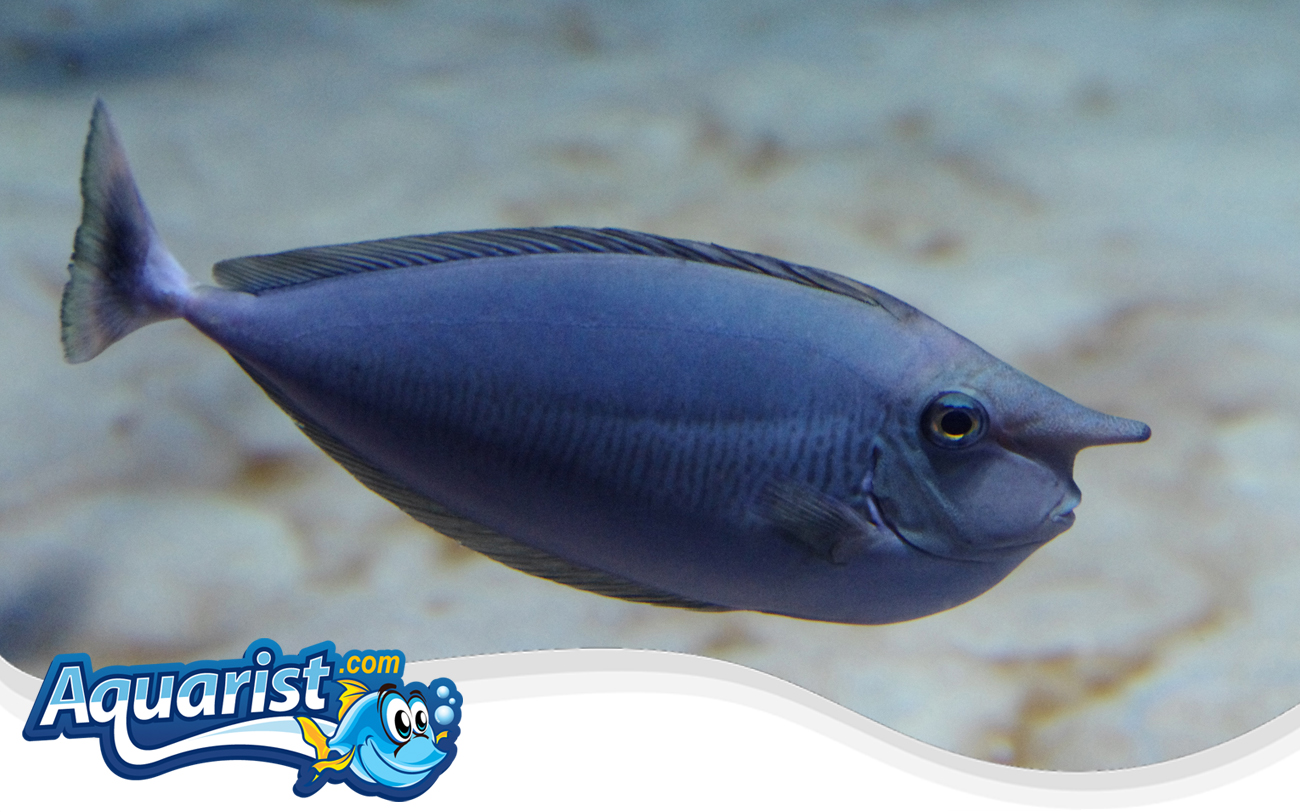Overview
- Found in tropical reef environments across the Indo-Pacific, often near deep slopes and drop-offs.
- Distinguished by its elongated body, short snout, and characteristic horn-like projection on its forehead.
- Known for its impressive swimming endurance, frequently covering large distances in search of food.
- Juveniles and adults exhibit different coloration, with mature specimens displaying a bluish-gray body and a sleek profile.
Feeding
- Primarily herbivorous, feeding on macroalgae, filamentous algae, and marine vegetation.
- In captivity, thrives on a diet rich in seaweed sheets, spirulina, and vegetable-based pellets.
- Supplementing with occasional protein sources like mysis shrimp can enhance overall health.
- Frequent grazing opportunities are essential to mimic its natural feeding patterns.
Habitat
- Prefers open reef environments with strong water currents and abundant algae growth.
- Often found in deeper waters, patrolling reef walls and rocky formations.
- Requires a well-oxygenated habitat with stable environmental conditions.
- Spends much of its time cruising mid-water, occasionally seeking shelter among corals and rocky crevices.
Fish Care
- Optimal water temperature: 75-82°F (24-28°C).
- pH level: 8.1-8.4, with a specific gravity of 1.023-1.026.
- Maintaining a balanced diet and clean water ensures long-term health.
- Regular water changes help manage waste levels and promote an algae-rich environment.
Compatibility
- Generally peaceful but may establish dominance over other herbivorous species.
- Compatible with a variety of reef-safe fish, provided they are not overly aggressive.
- Prefers being in the presence of other active swimmers, creating a dynamic tank environment.
- Avoid housing with fin-nipping species that may cause stress or damage to its elongated fins.
Aquarium Behavior
- Highly active swimmer, constantly moving throughout the aquarium in search of food.
- Frequently seen grazing on algae-covered surfaces, contributing to natural reef maintenance.
- Displays curiosity and intelligence, often interacting with its surroundings.
- Requires ample swimming space to exhibit its natural movement and behavior patterns.


